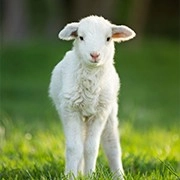Henna: Cultural Legacy

Henna art, known as mehndi in India, is a centuries-old tradition that carries profound cultural, spiritual, and aesthetic value.
Originating from ancient rituals and cultural practices, henna art has evolved into a beautiful, intricate form of body art embraced across India.
Characterized by delicate patterns and a rich brown hue, henna is used especially during weddings, festivals, and other celebrations to symbolize joy, beauty, and blessings.
The Origins of Henna in India
Henna art traces back to ancient times, with historical evidence suggesting its use as early as 3000 BCE. Although its origins are believed to lie in ancient Egypt and the Middle East, henna soon spread to India through trade and migration routes, quickly becoming embedded in Indian culture. Traditionally, henna was used for its cooling properties and as a form of adornment. Over time, it became associated with significant life events, marking celebrations, and festivals with elaborate designs.
Wishing You a Fantastic Halloween! Have You Picked Your Costume Yet?
Tips For Selecting Festive Flowers For Perfect Celebrations! Let's Start Then!
Rajasthani Traditional String Puppets: The Art of Storytelling and Super Fun!
Is Shirodhara Really Good? Worth The Hype! Let's Find Out!
Elevating Home Décor: Cultivating Exquisite Hydroponic Potted Plants in Glass Bottles
Discover the hidden power of grapefruit peel: from natural cleaning to health and culinary benefits!
Symbolism and Beliefs
Henna holds a special place in Indian traditions, often symbolizing prosperity, love, and protection against evil. For brides, the darker the henna stain on their hands, the stronger their marriage is believed to be, adding a layer of personal significance to the art form.
Stylish Mehndi Designs//Mehndi Designs//Haimanti's henna art
Video by Haimanti's Henna Art
Traditional Henna Art Styles and Techniques
Indian henna art is famous for its intricate and detailed patterns. Each design holds symbolic meaning and varies by region, reflecting the diversity of Indian culture.
Floral and Paisley Patterns
The most common motifs include flowers, paisleys, and vines, representing beauty, fertility, and joy. These intricate designs cover hands, arms, and feet, often extending to the forearm and shins.
Mandala and Peacocks
Peacocks and mandalas are also popular in Indian henna designs. The peacock, India's national bird, symbolizes grace and beauty, while mandalas represent unity and eternity.
Fine Lines and Fillings
Unlike henna art in other cultures, Indian mehndi is known for its fine lines, complex filling patterns, and the use of empty spaces to highlight the detailing. This intricate work requires skill and patience, with experienced henna artists spending hours creating the perfect design.
Henna in Indian Weddings and Festivals
Henna is an essential element in Indian weddings and festivals. Applying henna is considered auspicious and a symbol of good luck, fertility, and health.
Bridal Henna
Bridal henna is an elaborate ritual that takes place before the wedding day. The bride's hands and feet are adorned with intricate designs that sometimes include the groom's initials hidden within the pattern, adding a playful element to the ritual.
Festival Celebrations
During festivals such as Diwali, Karva Chauth, and Teej, women decorate their hands with henna as a way to celebrate the occasion. These designs tend to be simpler than bridal henna but carry the same cultural significance.
The Henna Making Process
Henna paste is made from dried henna leaves, which are ground into powder and mixed with water, lemon juice, and essential oils. After resting, the paste is applied using cones or sticks. As the paste dries and flakes off, it leaves behind a rich stain that can last up to two weeks.
Natural vs. Chemical Henna
Traditional henna is all-natural, made from plant leaves and other natural ingredients. However, with the growing popularity of henna, chemical-based "black henna" has emerged, though it is often discouraged due to potential skin reactions.

The Modern Revival of Henna Art
In recent years, henna art has gained international popularity, with celebrities and influencers showcasing henna tattoos. This global attention has led to a resurgence of traditional henna art, with artists creating contemporary patterns inspired by traditional designs.
Henna art remains an enduring symbol of India's cultural richness and artistic traditions. Dear Lykkers, it is more than just body art; it's a celebration of heritage, love, and community, connecting generations and bringing beauty to life's most memorable moments.
Whether for a wedding, festival, or personal adornment, henna continues to enchant and inspire people worldwide.

 · Lifestyle team
· Lifestyle team